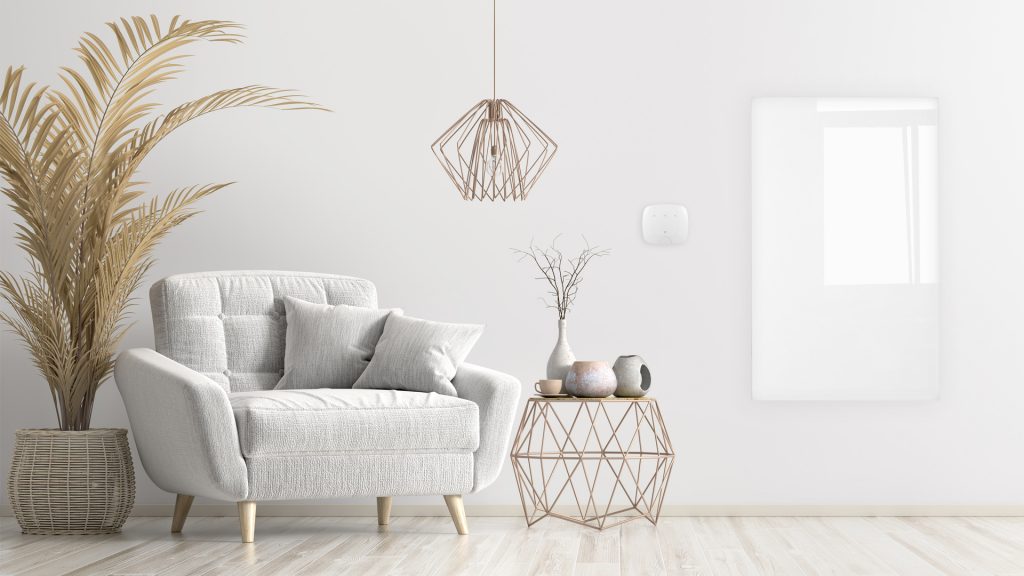
Infrared heating – real-world data
The Elite NuGEN homes use infrared and in actual performance, these homes far outperform the same homes with heat pumps.
David Craddock at Elite NuGEN speaks very eloquently about what he has done and has won multiple awards for the way he builds houses and is more than happy to talk about it and explain what he is doing and show people around.
The design of this home is to have good but not passivhaus levels of insulation and air tightness aiming for a balance between cost and effectiveness.
Infrared outperforms heat pumps
Using the Wondrwall energy management system, the infrared heating in these properties is highly efficient. The controls reduce energy consumption by not wasting energy. They learn temperature preferences for each room, how quickly that room heats up and cools down and when it is occupied and when empty.
The Wondrwall artificial intelligence then schedules the room to be warm when occupied and cooler when empty.
As infrared heating heats objects, not the air you do not lose all the heat from the home when you open a window or a door. and you can use the walls, floor, tables, chairs etc in the home to ‘store’ heat allowing the use of low cost, low carbon off-peak energy.
As a result, the infrared heating is more efficient, has lower CO2 emissions and lower running costs than a heat pump.
Infrared as part of a whole home design
Infrared is a lot lower cost to install than a heat pump, both in terms of the material cost and the labour. Rather than build the house with lots of insulation, making it super airtight, adding an MVHR and heat pump Elite NuGEN used the infrared heating, water tank with solar and battery and intelligent controls.
As a result, the home far outperforms the same home with a heat pump while being lower cost to build. In terms of energy consumption, carbon emissions and running costs, it’s not even close.


Other benefits of infrared
- Infrared gets hot so people know when it is on, and when it is off. This results in less support calls from residents when compared to heat pumps that need a lot of explanation.
- Infrared is far easier to install and removes 80% of the plumbing from the home reducing the cost to implement further.
- Infrared is also very low or even zero maintenance and results in less issues when compared to traditional heating.
- We ceiling mount the infrared heating which frees up wall space allowing a more flexible layout of the room as well as giving more usable space in the home. It also gives a better heat coverage than convection heating which relies on warm air rising to heat a room.
- Infrared is a responsive system so heats up a home and its occupants rapidly when required. This works particularly well with the Wondrwall controls in case someone enters a room when the AI has predicted it should be empty.
Retrofit of existing properties
We cannot finish without commenting on existing properties. In theory heat pumps should work better in older properties where the insulation is poorer (and for those that think EPC ratings are good, this is what they predict). Unfortunately this is not the case. Heat pumps are hard to install as you need to find space to install everything, you need to replace the radiators and then the energy bills go up pushing the occupants into fuel poverty.
The fact is, regardless of what low carbon heating system is installed, unless there are improvements to the fabric of the home, the occupants are going to be negatively impacted. And as stated in the original post, if you have low heat losses, then the lower capital cost of infrared more than pays for itself.
We have a number of trials happening now in retrofit properties but too early for accurate data but the initial results look positive and we will be happy to share when we have a full heating season behind us.
If you would like more info, please contact us at hello@wondrwall.co.uk